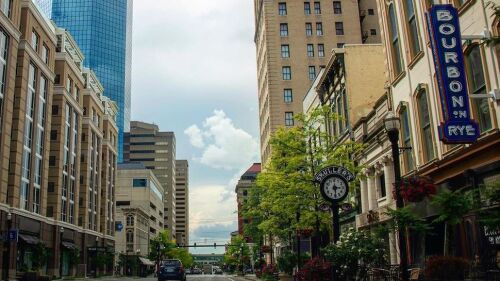If you want to know Lexington’s history, start by looking at its architecture. Many distinct styles have been incorporated into the city’s homes, including Richardsonian Romanesque architecture, a design that gained popularity in the late 19th century.
What is Richardsonian Romanesque?
The style is named for architect Henry Hobson Richardson, and is noted for incorporating Romanesque elements while embracing unusual shapes, stone and rock facades, as well as Richardson’s eccentric sense of style (which often had Gothic influences). Key elements include:
- Designs made with heavy materials, commonly stone or brick, which could result in mixed colors and textures.
- Arched doors and windows, frequently accompanied by decorative columns and brick designs.
- Hipped and sometimes gabled roofing, which often led to asymmetric builds.
Arriving in Lexington
Richardson’s early career primarily took place on the East Coast, and his works can be seen in New York, Massachusetts, and Pennsylvania. In 1885 he began work on what would become his final project: Marshall Field’s Whole Store in Chicago. Before he died the following year, his influence was already moving west.
It’s believed this style of architecture started to appear across the US — including Lexington — following Richardson’s death because architects found studies of his works in popular publications. It’s also believed stone carvers + masons brought Richardsonian Romanesque designs west to find work as the style started losing favor in the eastern US in the late 1800s.
Where to see Richardsonian Romanesque in Lexington
This architectural style can be found in many public settings — likely because its heavy build is designed to evoke feelings of grandness and permanence.
Old Fayette County Courthouse
Construction began on this landmark in 1898, at the height of Richardsonian Romanesque design popularity. You can see the style in the arched doorways + windows, brickwork, and roofing. The courthouse’s first trial was held in 1900, and it is now on the National Register of Historic Places.
Central Christian Church
With its corinthian columns, brick facade, and arched entranceway, this church is a glowing example of Richardsonian Romanesque architecture. Its current design was built in 1894, featuring exquisite stonework craftsmanship.
Elsmere Park + Fayette Park
These two neighborhoods of Lexington were laid out in the late 1800s and have since received historic distinction from the city. In addition to examples of other late-19th century architecture, these neighborhoods feature many Richardsonian Romanesque houses.
Vogt Reel House
Also known as Fire Department Station No. 4, this building was erected in 1904 and has a blend of neo-Jacobean and Richardsonian Romanesque elements. Check out Lexington’s oldest operating firehouse’s arched windows, brick columns, and hip roof.

This Richardsonian Romanesque home sold in 2023 but was built in 1892 and is on the National Register of Historic Places.
Images created by: Pending Media, Design by: Blake Liles Minix with Liles Interiors
Richardsonian Romanesque homes
This grand architectural style isn’t hard to find — there are Richardsonian Romanesque homes sprinkled throughout Lexington. Here are a few examples that have been listed recently:
- Built in 1880 for banker Richard T. Anderson, this seven-bed, four-bath home features an arched grand entrance + brick exterior with decorative stonework. It recently sold at an estimated price of ~$1.6 million.
- This four-bed, three-bath home was built in 1892 — earning a spot on the National Registrar of Historic Places — and was last sold in 2023. It has retained most of its historic elements, like its three-story turret.

The Walter Scott House, photographed in 1974.
Photo via UK Libraries Special Collections
- The Walter Scott house was built in 1890 in the Northside District, an area of Lexington known for its eye-catching architecture. You’ll recognize its red brick + terracotta exterior, large windows, and turret as examples of Richardsonian influence.
- The house at 802 West Maxwell St. in Woodland Heights displays the Richardsonian Romanesque style with its stone archways, red brick exterior, and asymmetrical roof. Lucky Lexingtonian’s can choose to live inside history, as this house isnow partitioned into apartments.














